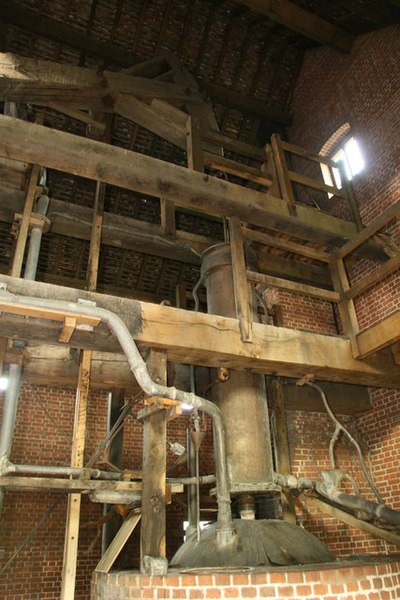We just learned about the Steam Pump.
Another part of the history of steam engines is the Newcomen Engine.
In 1712 in England, Thomas Newcomen took the idea of the Steam Pump and made his own type of steam engine.
He had a big tank full of water called a boiler that was being heated up by a coal fire underneath.
The water would boil and make steam that was let up into another smaller cylinder tank.
That steam would expand and push up on a piston that was hooked to a big long beam.
The beam was like a see-saw, and when the one side got pushed up, the other side was pushed down.
After the steam had filled the cylinder, a plug valve would be closed so no more steam would come in, and another tank of cold water would splash some cold water onto the steam.
This created a vacuum, which sucked the piston back down, pulling the beam down, and pulling the other side of the beam up.
With this steam engine, it would rock the beam back and forth like a see-saw.
The other end of the beam was hooked up to a pump to help pull water out of mines that were flooded.
At first the plugs had to be opened by a person called the "plug man" who would run around and pull the plugs at just the right time.
Later someone figured out a way to use a board with some chains on it called a "plug tree" with weights on it that would automatically open and close the valves.


(from: wikipedia - newcomen atmospheric engine)
Kid Facts - Blast from the past: Forensic Botany







